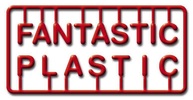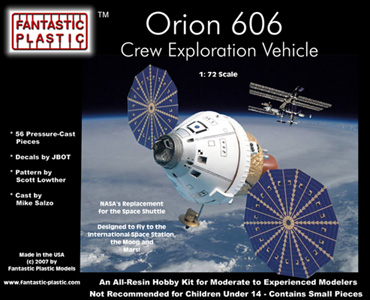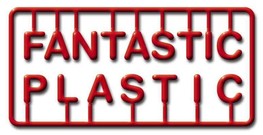Orion 606 Crew Exploration Vehicle (CEV) (2007)
About the Design
In the early years of the 21st Century, it became painfully obvious that the Space Shuttle's days were numbered. The tragic loss of the Space Shuttle Columbia on February 1, 2003 accelerated the search for a practical, low-cost replacement for the vulnerable and hugely expensive space-plane, which had been designed in the mid-1970s.
In August 2006, NASA officially announced that Lockheed-Martin would be the prime contractor for the Crew Exploration Vehicle (CEV), code-named "Orion." As space-watchers had long expected, the Orion vehicle would be "Apollo on steroids," a capsule- based system with mostly disposable components, save for the Command Module, which could be used on multiple missions. The craft was intended to carry four to six crew members and serve as the primary vehicle for a variety of manned missions ranging from low-earth shuttle flights to the International Space Station to eventual trips to the Moon and, ultimately, to Mars. In spring 2007, Lockheed-Martin released plans for a modified CEV, dubbed the 606, which was distinguished by its dramatically smaller Service Module designed to minimize the vehicle's mass. And then, in early 2010, the Obama Administration announced that funding for the Orion Project as well as its Aries booster (together known as "Project Constellation") would be canceled as part of its drive to cut federal spending. America's return to the Moon -- and after that, a mission to Mars -- would be put on indefinite hold while NASA concerned itself with low-orbit manned missions to the International Space Station and automated probes to the planets. In 2011, the spacecraft system was revived as part of NASA's Project Artemis program, and the capsule -- now a partnership of Lockheed-Martin and Europe's Airbus Defence and Space -- dubbed the Orion Multi-Purpose Crew Vehicle (MPCV), with a somewhat different configuration. |
About the Kit
The Orion 606 CEV, released in August 2007, formally replaced the original Northrop-Grumman CEV kit Fantastic Plastic released in spring 2006. A wholly new pattern, the project was actually revamped in mid-production when Lockheed-Martin changed its original, more traditional Apollo-like design to this more truncated version in spring 2007.
Many ideas were exchanged on how to best depict the wafer-thin solar panels that are the signature part of this spacecraft. Although photo-etched brass was discussed, we ultimately decided that metallic decals on thin, 0.015" styrene provided the most practical, economical solution. |



